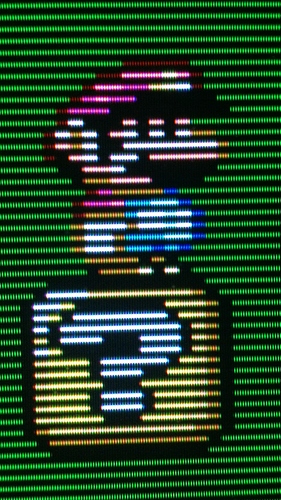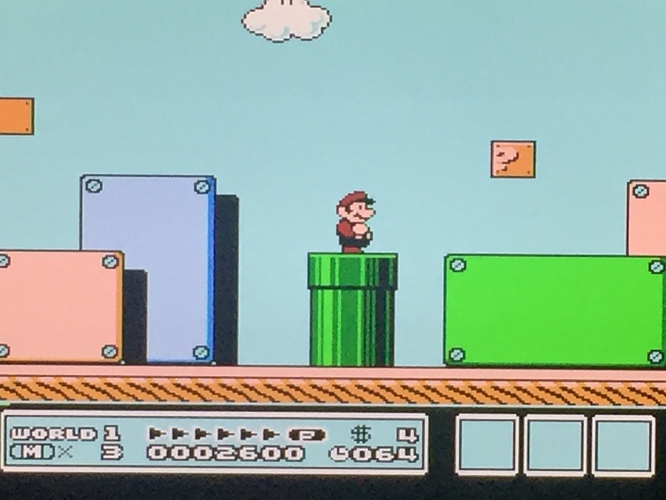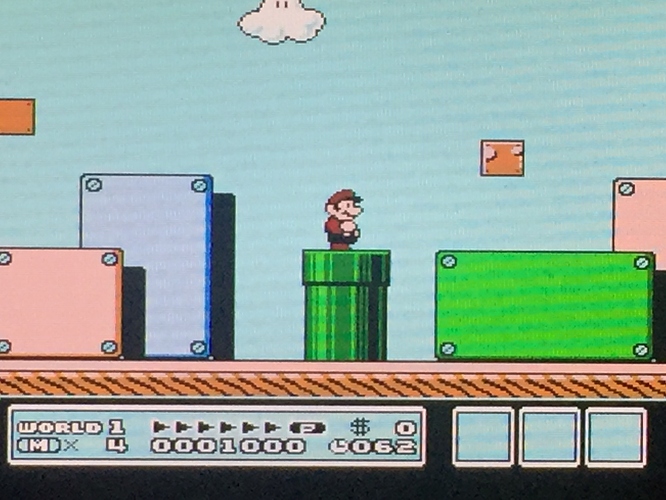With your preferences, Nesguy, which are pretty similar to mine, I’m surprised you simply haven’t defaulted to putting together an actual high-quality CRT setup rather than deal with compromises on a flat panel with shaders. Maybe you just don’t have the space for it. I know I certainly will never be satisfied by anything else after enjoying a super high TVL BVM–Yes, these things look incredible. Not “authentic”, not like when I was a kid, sure, but who cares? Once you see what those old games were capable of looking like, there’s no going back IMO.
Space is definitely a factor since I’m currently living in a one bedroom apartment. Another factor is that it’s just becoming increasingly hard to find a good CRT where I live. The last few times I went hunting, I either came back empty handed or with junk that I wound up taking to the recycling center (where it was no doubt relocated to a giant warehouse where CRTs are just left to rot). It seems that if one wants a good CRT these days, you have to be prepared to shell out some serious cash and have something shipped from across the country. It’s definitely something I’ve been considering.
I think, objectively, the qualities of a CRT that benefit 240p pixel art are the scanlines, the lower TVL, phosphor structure, glow, and lack of motion blur. The scanlines were deliberately taken into account by pixel artists (see the quote regarding the “0.5 dot technique”). I think it’s also obvious that the phosphor structure, glow and perhaps lower TVL were essential to getting the highlights and lowlights to look as intended, and to capture some of the fine details which create the illusion of a higher definition.
A lot of people also seem to think that signal-specific qualities, which are separate from the qualities of a CRT, somehow benefit pixel art. I think blur and artifacts resulting from composite video may have been taken into consideration by some pixel artists when they designed the graphics for some particular games, but whether or not this actually benefits the pixel art compared to using RGB is somewhat questionable, IMO. The famous example is the Sonic waterfall. I think people are forgetting just how awful the composite output of the Genesis was. People are also forgetting that there is such a thing as a “cognitive filter” - at a certain distance, the Sonic waterfall looks transparent even through RGB or S-video, but without the horrible crosstalk and artifacts. People are sitting way too close to their displays and then complaining that everything looks too sharp. Rather than move back a couple feet and view it with the max viewing angle the content was designed for, they start blurring the shit out of everything with shaders, which brings me to your point:
We still need to wait for a technology that sufficiently solves the motion persistence of sample-and-hold displays though. Your picture may look even better than any CRT ever made at some point, but once your character starts moving fast or stuff scrolls around you’ll see a blur that never existed even on a shitty CRT. That’s a problem that no shader will ever fix.
That’s another excellent reason to not add any blur to the image via shaders or filters. Even an LCD with a 1 ms response time looks horribly blurry in motion compared to a CRT. When you add additional blur via shaders or filters it just completely wrecks the picture quality when things are in motion. It makes me wonder if people are actually playing games with these settings or just trying to get a good screenshot, or if they’ve just become so accustomed to horrible motion blur from LCDs that they don’t notice it.





 That alone might account for any small differences in brightness/color. I’ll try to redo this soon.
That alone might account for any small differences in brightness/color. I’ll try to redo this soon.




